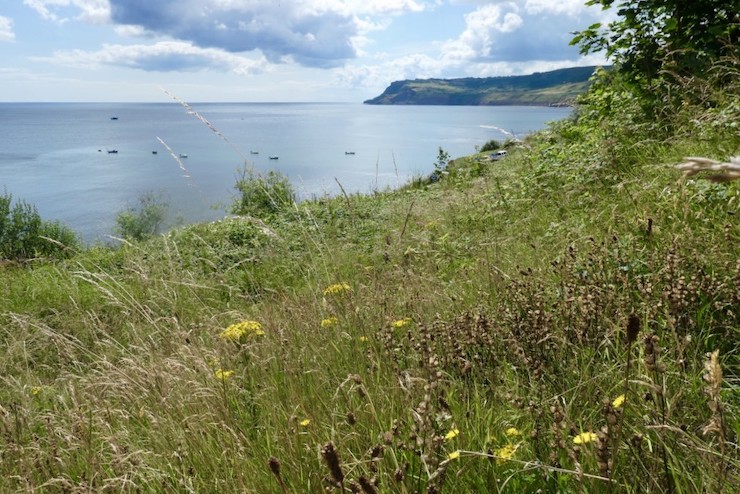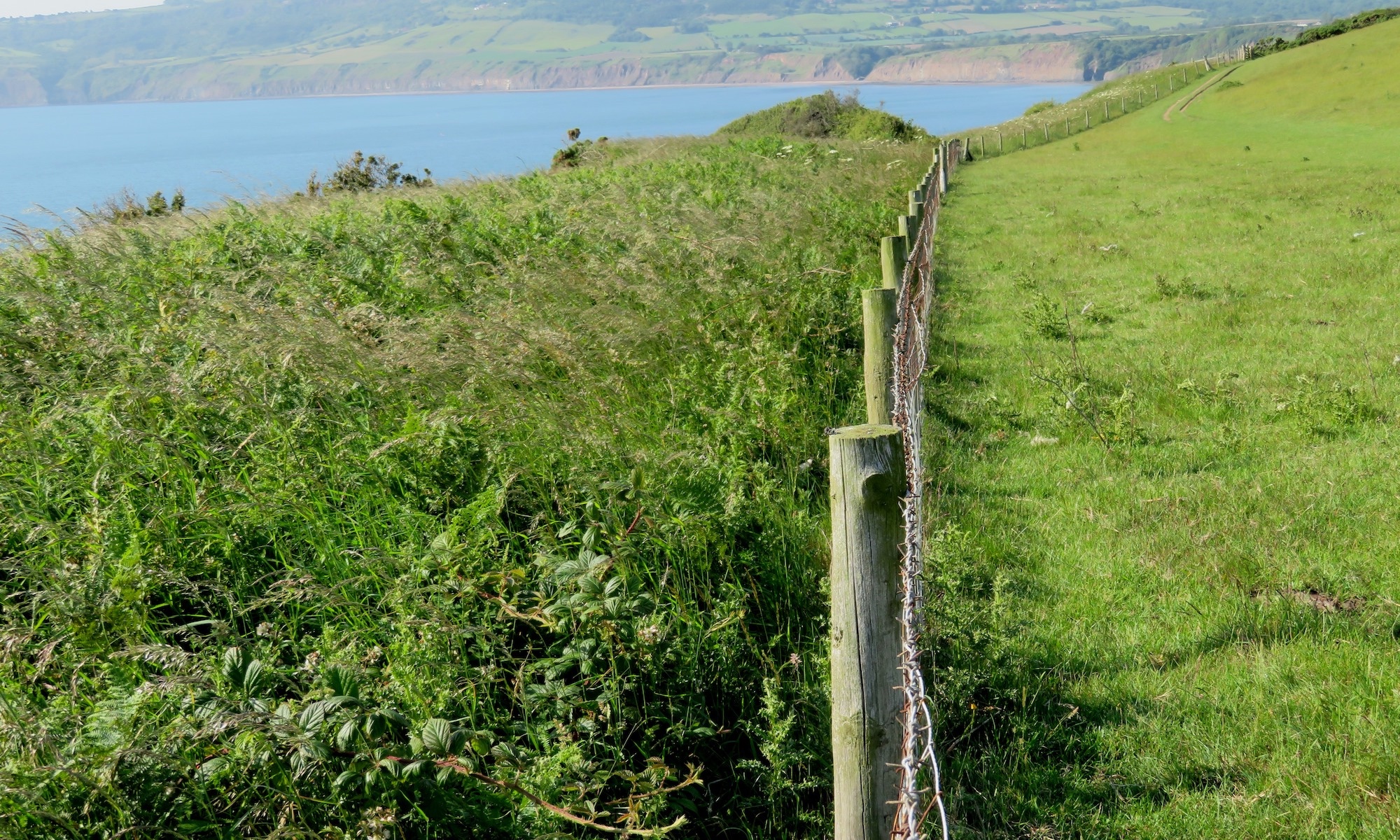by Hilary Koll.
10th March 2024
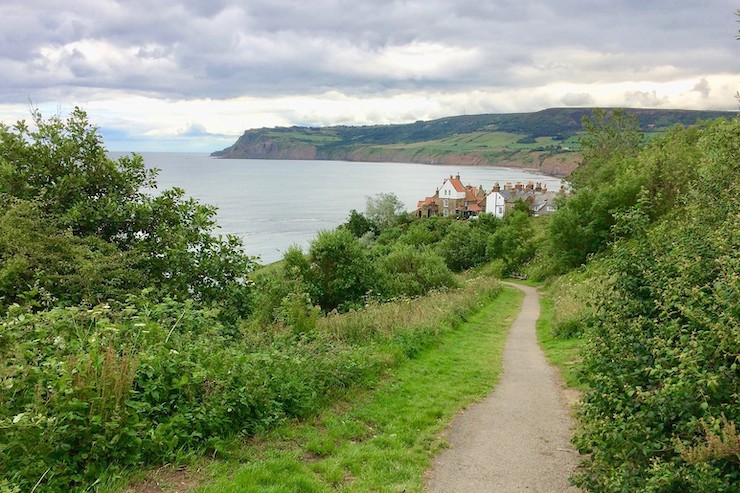
If you’ve ever had the good fortune to visit Robin Hood’s Bay, on the north-east coast of Yorkshire, you will have been struck by the impressive view from the top of the steep bank that leads down to the famous fishing village. It is impossible to ignore the majesty of the vista – the bay stretching out in a perfect arc towards the distinctive shape of the cliffs at Ravenscar; the collection of orange roofs of cottages in the village that seem to be clinging on to steep banks that fall away to the sea. In whatever season, you’ll find yourself swept up in the dramatic (and often windy) experience of trying to take in the whole view and, if you’re like me, in trying to capture the best photo you can. This view and the village beneath have been attracting visitors from as far back at the early 19th century and continue to do so to this day.
Although the wider view from the Bank Top has largely remained unchanged, what you may not be aware of, however, is that the sloping hillside in the foreground has undergone a succession of natural and human-made changes over the years. In the 1800s the slope leading down to the cliffs and shoreline, as the photo below shows, was an open landscape of largely grazed meadows (used also to dry washing and fishing nets).
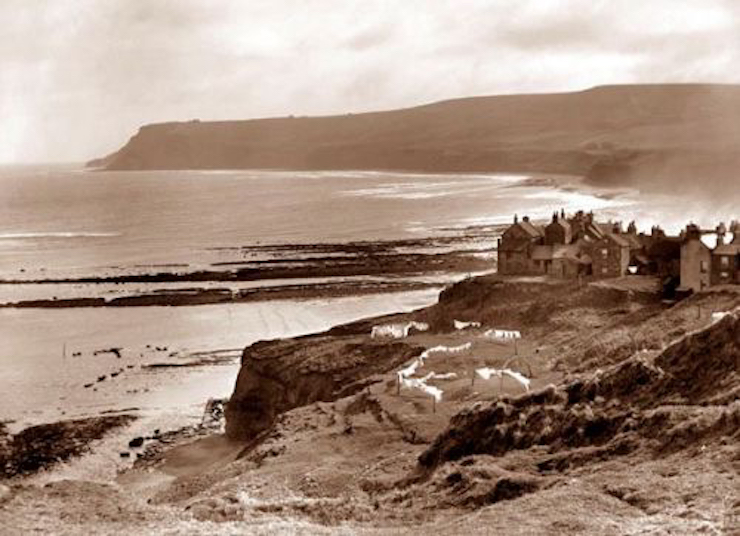
In the 1970s it was manicured with more formal grassed areas; in the early 2000s coast protection and slope stabilisation work took place, causing soil disturbance, adding drainage and further terracing.
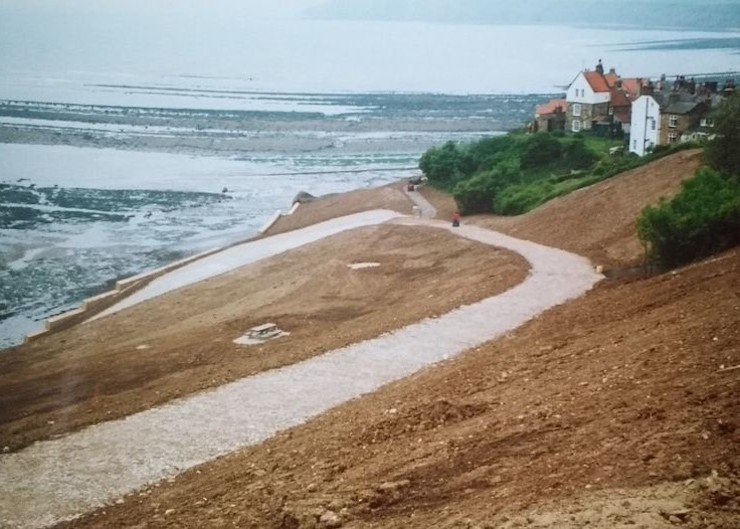
The land is owned and maintained by Scarborough Borough Council (now absorbed into the new North Yorkshire Unitary Council). In more recent years, budget cutbacks have led to a progressive reduction in the amount of maintenance by the Council. This has allowed brambles and self-seeded trees/bushes to re-establish themselves to the extent that the view was becoming obscured and leading to complaints of ‘untidiness’.
In 2020 a few members of the local community with the support of Wendy English (botany recorder for the Whitby Naturalists’ Club) began to discuss possible ways to address these concerns. After gaining support from the Council ecologist and the North York Moors ranger for the area, they proposed a plan – with the aim of keeping an open vista for visitors whilst maximizing the habitats for native flora and fauna, creating a mosaic of natural environments to increase biodiversity, and keeping some areas of scrub and bramble that are so valuable for wildlife, including migrant birds. This was developed into an ongoing management plan that included the recovery of wildflower meadow areas, allowing indigenous species to thrive once again and to attract pollinators. It also included selective introduction of species (from locally collected seed) that are prevalent along this stretch of coast (e.g. Restharrow) or red-listed plants growing nearby struggling against habitat loss (e.g. Dyers Greenweed).
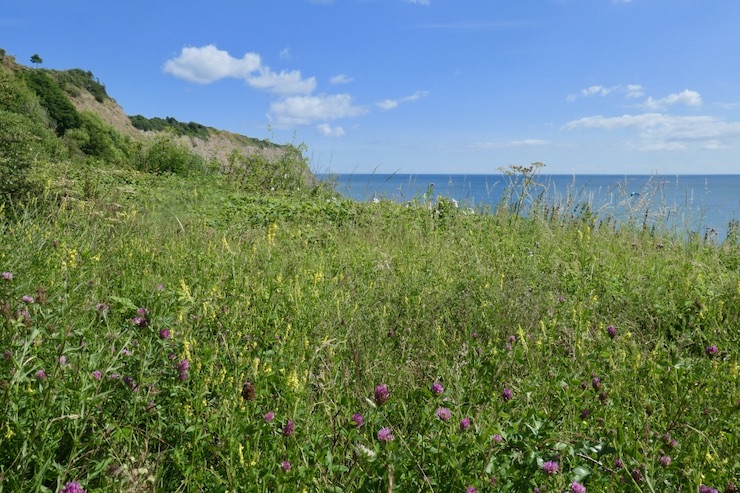
Having heard a little about the project in recent years, I went to visit the site and meet with Joanna Pedley, co-author of the management plan and chair of the Robin Hood’s Bay Tourism Association Ltd. She explained that the project has tried to strike a careful balance, taking into account different views and perspectives. Not everyone places the same value on allowing nature to flourish, preferring neatness over biodiversity.
At a time when our planet is suffering from such biodiversity loss, I was delighted to hear that this project is trying to draw people together around the idea of nurturing a range of different habitats thereby diversifying the land for wildlife, whilst preserving valuable species. As Joanna explained, the plan has been developed with people in mind – not only will the approach have “…environmental benefits, but we believe it will also significantly enhance local community and visitor enjoyment of the area, with more open views and a more pleasant environment to walk through, sit a while, picnic or play.”
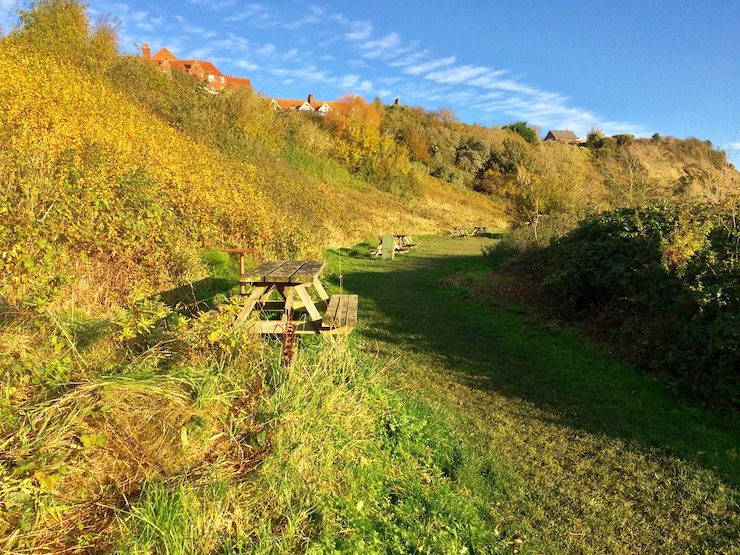
So, after a baseline ecological survey of the area in July 2020 undertaken by Wendy English from the Whitby Naturalists Club, the approved plan began to be implemented. As Joanna showed me round, she explained the immense efforts undertaken since then by a team of volunteers, together with Council staff and the coastal ranger of the North York Moors, to restore meadow habitats and to open up patches of grassland and maintain those fabulous views across the Bay.
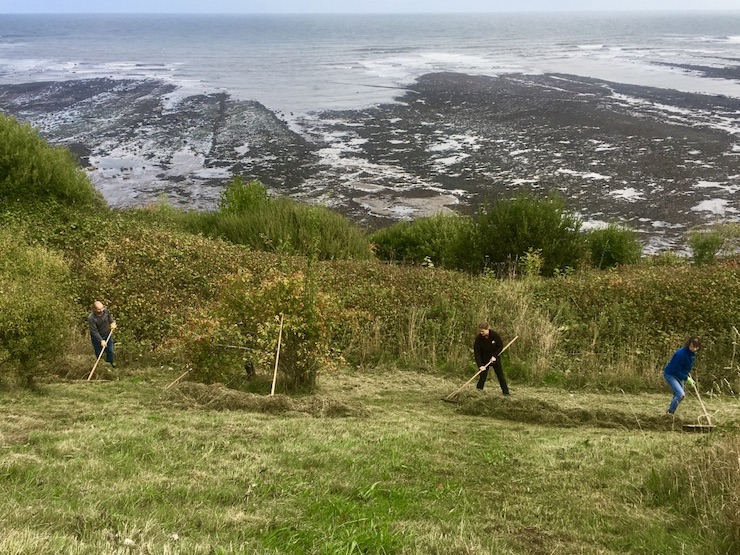
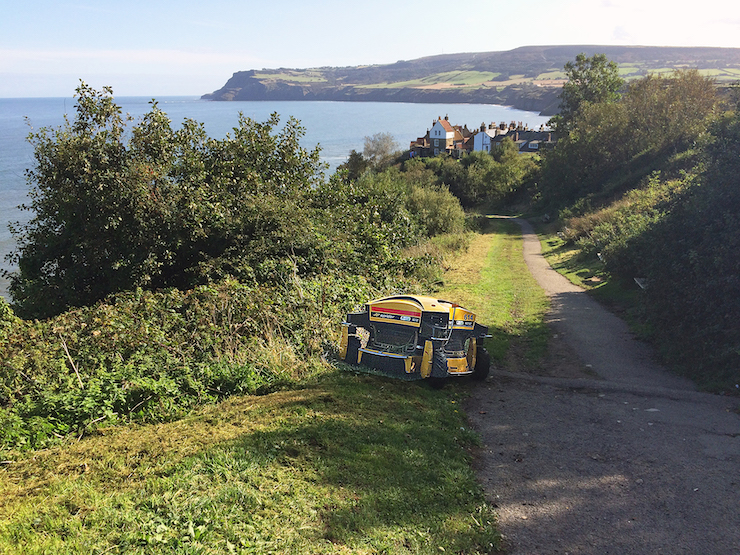
The Council used their remote controlled ‘Spider’ machine to cut six areas of unimproved grassland for the first stage of wildflower meadow recovery, with volunteers raking off the cuttings (to keep soil nutrient levels low). In the first year, one area (with relatively coarse grass) was selected to trial the introduction of locally collected Yellow Rattle seed. This trial was successful, so Yellow Rattle seed has been introduced in subsequent years to two further areas. Another meadow area has particularly low nutrient levels and finer grasses where a wide range of meadow flower species are already thriving. Here another small-scale trial took place, taking green hay from a nearby species-rich meadow to further diversify the already rich natural seed-bank. These small-scale trials, along with the basic annual cutting and raking-off regime have really started to repay the work of the group of volunteers.
Around 40 Bee Orchids were counted in the summer of 2022 in one area, along with a good number of Common Spotted Orchids across several of the areas; the Yellow Rattle has spread well along with Knapweed, Yarrow and many different species of Vetch; and beautiful Eyebright has begun to appear. The number of plant species recorded to date across the whole area is more than 100 and over 140 different moth species have also been recorded. Different species of bats have been detected that benefit from the long nectar-producing season of the bramble patches attracting the insects they feed on.
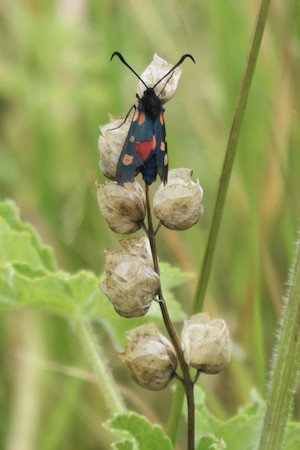
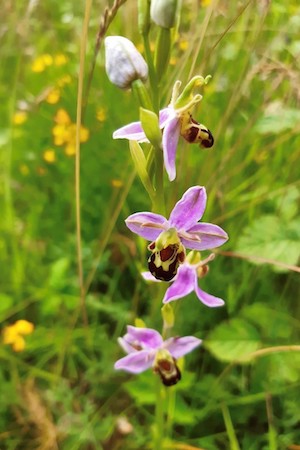
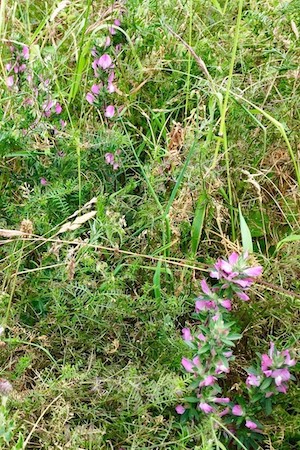
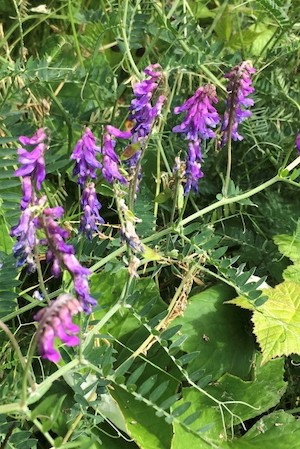
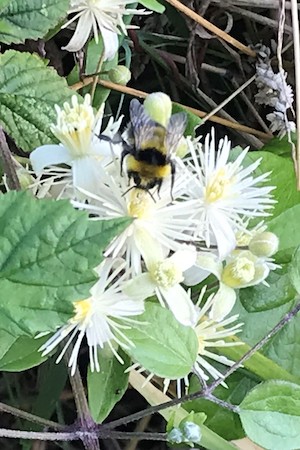
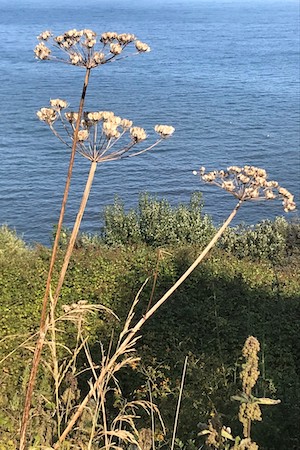
The mosaic of different habitats is clear, with foliage and flora of different colours, heights and uses. The more closely mown areas around picnic tables are framed with brambles, mature trees and bushes, whilst some raked grass from the meadow areas has been collected and used to provide habitat for slow worms and other reptiles. Badger trails are visible through the undergrowth. In spring and summer particularly, visitors can sit at the tables and on the benches and listen to birds singing from the bushes and trees, see pollinators and butterflies dancing in the wildflower meadows and, of course, look out at the magnificent view.
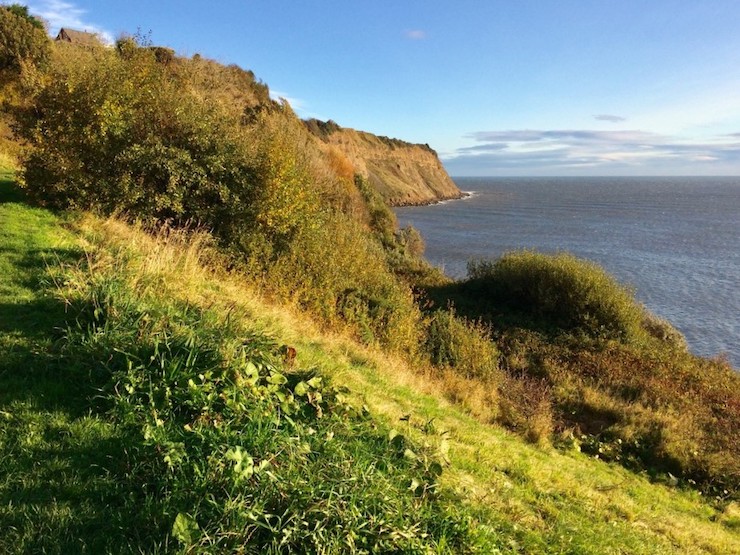
The mosaic of habitats and experiences are magical, in my opinion, and it is through the dedication of volunteers, like Joanna and her team, coming together to increase biodiversity in a way that ensures human enjoyment that has made this possible. And this made me think – how many other council-owned sites around the country could be developed by communities in similar ways? Could nature-depleted sites, however small, be rewilded by volunteers? Owning land doesn’t have to be the only way to do it. This project in Robin Hood’s Bay is an example of what can be done when people come together to help nature to flourish in community spaces and hopefully can be an inspiration to others. Perhaps a place near you could welcome nature back and in so doing become a place to be proud of and in which life can thrive.
Post Script
This piece was written in March 2023. Shortly afterwards, and for the rest of that year, public access to the Rocky Foreshore was not allowed. A major engineering project took place to repair the huge sea wall which protects the village from the sea. This route to the beach became the main access for the contractors, their machines and materials. Happily, since January 2024, the area is now open again to the public and you can visit the site at anytime.
Image credits: Joanna Pedley, Hilary Koll, Debbie Davitt, Rowena Sommerville. The sepia photograph from c.1890 is believed to be from the Frank Meadow Sutcliffe Collection, now held by Whitby Museum.
Useful links:
- Robin Hood’s Bay Tourism Association – Nature & Wildlife
- Robin Hood’s Bay Tourism Association – Enhanced Land Management Plan
- North York Moors National Park – Robin Hood’s Bay and Boggle Hole
